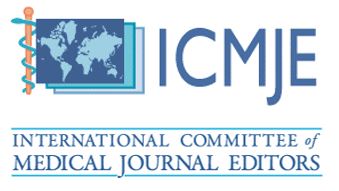Application of Zirconia Nanoparticles in dentistry and oral health
Keywords:
Zirconia Nanoparticles, Dentistry, Oral Health, Dental Restorations, Additive Manufacturing, Dental Prosthetics, Antimicrobial ActivityAbstract
Zirconia nanoparticles have emerged as a groundbreaking material in dentistry, offering transformative solutions for restorative, prosthetic, and implant applications due to their exceptional mechanical properties, biocompatibility, and multifunctionality. These nanoparticles enhance dental composites, such as bioactive cements, by improving hardness (e.g., 1.13 GPa Vickers hardness), modulus of elasticity, and antimicrobial efficacy against oral pathogens like Staphylococcus aureus, thereby reducing secondary caries risks. Additive manufacturing techniques, including nanoparticle jetting, enable precise fabrication of zirconia crowns with marginal deviations as low as 21.8 µm, optimizing fit and clinical efficiency. Surface modifications via plasma-sprayed zirconia coatings on titanium implants significantly enhance osseointegration, achieving 54.7% bone-implant contact in vivo, while gradient yttria-stabilized multilayered systems (e.g., KATANA™ HTML) balance aesthetics and strength (flexural strength >800 MPa) for high-stress prosthetic frameworks. Zirconia’s bioactive and inert nature also minimizes biofilm formation and ion release, supporting long-term biocompatibility. Despite these advancements, challenges such as inherent brittleness, technique-sensitive manufacturing, and limited long-term clinical data under dynamic oral conditions necessitate further research. Future innovations should focus on hybrid composites to improve toughness, scalable fabrication protocols, and rigorous clinical validation. By bridging material science and clinical practice, zirconia nanoparticles hold immense potential to advance personalized, durable, and aesthetically driven dental care, aligning with the evolving demands of modern dentistry.
Downloads
References
1. Behera A, Behera A. Nanomaterials. Advanced materials: an introduction to modern materials science. 2022:77-125.
2. Ghahramani Y, Tabibi SS, Khan MMR, Asadi A, Mohammadi E, Khaksar E, et al. Recent advances in bioactive materials: Future perspectives and opportunities in oral cancer biosensing. Talanta. 2025;286:127494. doi: https://doi.org/10.1016/j.talanta.2024.127494.
3. Mousavi SM, Hashemi SA, Fallahi Nezhad F, Binazadeh M, Dehdashtijahromi M, Omidifar N, et al. Innovative Metal-Organic Frameworks for Targeted Oral Cancer Therapy: A Review. Materials (Basel). 2023;16(13). Epub 2023/07/14. doi: 10.3390/ma16134685. PubMed PMID: 37444999; PubMed Central PMCID: PMC10342828.
4. Zhang X, Lu W, Zhou G, Li Q. Understanding the mechanical and conductive properties of carbon nanotube fibers for smart electronics. Advanced Materials. 2020;32(5):1902028.
5. Adl A, Abbaszadegan A, Gholami A, Parvizi F, Ghahramani Y. Effect of a new imidazolium-based silver nanoparticle irrigant on the bond strength of epoxy resin sealer to root canal dentine. Iranian Endodontic Journal. 2019;14(2):122.
6. Bayda S, Adeel M, Tuccinardi T, Cordani M, Rizzolio F. The history of nanoscience and nanotechnology: from chemical–physical applications to nanomedicine. Molecules. 2019;25(1):112.
7. Asadi A, Rezaee M, Ghahramani Y. Biomimetic nanomaterials in regenerative oral medicine, A minireview. Journal of Oral and Dental Health Nexus. 2024;1(1):70-5. doi: 10.61838/kman.jodhn.1.1.7.
8. Mousavi SM, Hashemi SA, Mazraedoost S, Chiang W-H, Yousefi K, Arjmand O, et al. Anticancer, antimicrobial and biomedical features of polyoxometalate as advanced materials: A review study. Inorganic Chemistry Communications. 2022;146:110074.
9. Prasad R, Bhattacharyya A, Nguyen QD. Nanotechnology in sustainable agriculture: recent developments, challenges, and perspectives. Frontiers in microbiology. 2017;8:1014.
10. Abbaszadegan A, Ghahramani Y, Farshad M, Sedigh-Shams M, Gholami A, Jamshidzadeh A. In vitro evaluation of dynamic viscosity, surface tension and dentin wettability of silver nanoparticles as an irrigation solution. Iranian Endodontic Journal. 2019;14(1):23.
11. Serrano E, Rus G, Garcia-Martinez J. Nanotechnology for sustainable energy. Renewable and Sustainable Energy Reviews. 2009;13(9):2373-84.
12. Babatunde DE, Denwigwe IH, Babatunde OM, Gbadamosi SL, Babalola IP, Agboola O. Environmental and societal impact of nanotechnology. Ieee Access. 2019;8:4640-67.
13. Isibor PO. Regulations and policy considerations for nanoparticle safety. Environmental Nanotoxicology: Combatting the Minute Contaminants: Springer; 2024. p. 295-316.
14. Nabavizadeh M, Ghahramani Y, Abbaszadegan A, Jamshidzadeh A, Jenabi P, Makarempour A. In vivo biocompatibility of an ionic liquid-protected silver nanoparticle solution as root canal irrigant. Iranian endodontic journal. 2018;13(3):293.
15. Khan SH. Green nanotechnology for the environment and sustainable development. Green materials for wastewater treatment: Springer; 2019. p. 13-46.
16. Tawiah B, Ofori EA, George SC. Nanotechnology in societal development. Nanotechnology in Societal Development: Springer; 2024. p. 1-64.
17. Ghahramani Y, Yaghoobi F, Motamedi R, Jamshidzadeh A, Abbaszadegan A. Effect of endodontic irrigants and medicaments mixed with silver nanoparticles against biofilm formation of enterococcus faecalis. Iranian Endodontic Journal. 2018;13(4):559.
18. Mazumder DD. A Comprehensive Review on Materials Used in Various Specialized Areas and Disciplines of Dentistry: Analyzing Their Economic Feasibility and Biocompatibility.
19. Mohammadi AT, mohammad Taheri SA, Karamouz M, Sarhaddi R. Rising Innovations: Revolutionary Medical and Dental Breakthroughs Revolutionizing the Healthcare Field: Nobel Sciences; 2024.
20. Huang B, Chen M, Wang J, Zhang X. Advances in zirconia-based dental materials: Properties, classification, applications, and future prospects. Journal of dentistry. 2024:105111.
21. Zhao R, Meng X, Pan Z, Li Y, Qian H, Yang X, et al. Recent Advances in Nanohydroxyapatite: Synthesis Methods, Biomedical Applications, and Innovations in Composites. Recent Advances in Nanohydroxyapatite: Synthesis Methods, Biomedical Applications, and Innovations in Composites.
22. Arya A. Comparative Study of the Flexural Strength and Modulus of Elasticity of Different Types of Adhesive Restorative Materials-An in Vitro Study: Rajiv Gandhi University of Health Sciences (India); 2020.
23. Asaad YM, Alhudaithi MK, Alazraqi MS, Almugren SS, Alhumizi NA, Albesher FA, et al. The impact of occlusal forces on the longevity of restorations. Int J Community Med Public Health. 2023;10:3899-903.
24. Ramadoss R, Padmanaban R, Subramanian B. Role of bioglass in enamel remineralization: Existing strategies and future prospects—A narrative review. Journal of Biomedical Materials Research Part B: Applied Biomaterials. 2022;110(1):45-66.
25. Moazzami F, Ghahramani Y, Tamaddon AM, Dehghani Nazhavani A, Adl A. A histological comparison of a new pulp capping material and mineral trioxide aggregate in rat molars. Iran Endod J. 2014;9(1):50-5. Epub 2014/01/08. PubMed PMID: 24396376; PubMed Central PMCID: PMC3881302.
26. Parhi S, Pal S, Das SK, Ghosh P. Strategies toward development of antimicrobial biomaterials for dental healthcare applications. Biotechnology and Bioengineering. 2021;118(12):4590-622.
27. Hu C, Wang LL, Lin YQ, Liang HM, Zhou SY, Zheng F, et al. Nanoparticles for the treatment of oral biofilms: current state, mechanisms, influencing factors, and prospects. Advanced Healthcare Materials. 2019;8(24):1901301.
28. Jaber MA, Jaber AM, Elameen AM, Elameen FM. Evaluating the Efficacy, Durability, and Clinical Implications of Zirconia vs. Titanium Dental Implants: A Comprehensive Review. 2024.
29. Gulatia K, Chopraa D, Kocak-Oztuga NA, Verronc E, Gulati K. Fit and Forget: The Future of Dental Implant Therapy Via Nanotechnology.
30. Sakaguchi RL, Powers JM. Craig's Restorative Dental Materials-E-Book: Craig's Restorative Dental Materials-E-Book: Elsevier Health Sciences; 2011.
31. Fargas Ribas G, Armelín Diggroc EA. Polymer-zirconia based ceramic composites produced by 3D-printing. 2022.
32. Ghazanfari A, Li W, Leu MC, Watts JL, Hilmas GE. Additive manufacturing and mechanical characterization of high density fully stabilized zirconia. Ceramics International. 2017;43(8):6082-8.
33. Kazama-Koide M, Ohkuma K, Ogura H, Miyagawa Y. A new method for fabricating zirconia copings using a Nd: YVO4 nanosecond laser. Dental materials journal. 2014;33(3):422-9.
34. Goodacre CJ, Campagni WV, Aquilino SA. Tooth preparations for complete crowns: an art form based on scientific principles. The Journal of prosthetic dentistry. 2001;85(4):363-76.
35. Kirsch A, Ackermann KL. The IMZ osteointegrated implant system. Dental Clinics of North America. 1989;33(4):733-91.
36. Kyratsis P, Tzotzis A, Davim JP. CAD-based Programming for Design and Manufacturing. Springer.
37. Rushdie S. Advances in CAD/CAM Technology for Chairside Restorative Dentistry: A Workflow Analysis. Journal of dental care. 2024;1(1):74-80.
38. Oye E, Owen A. Revolutionary Advancements in CAD/CAM Systems: Transforming the Future of Dental Restoration. 2024.
39. Kaushik R, Rapaka R. A Patient-Centered Perspectives and Future Directions in AI-powered Teledentistry. Discoveries. 2024;12(4):e199. doi: 10.15190/d.2024.18.
40. Wang Q, Huang Y, Qian Z. Nanostructured surface modification to bone implants for bone regeneration. Journal of Biomedical Nanotechnology. 2018;14(4):628-48.
41. Stich T, Alagboso F, Křenek T, Kovářík T, Alt V, Docheva D. Implant‐bone‐interface: Reviewing the impact of titanium surface modifications on osteogenic processes in vitro and in vivo. Bioengineering & translational medicine. 2022;7(1):e10239.
42. Gupta S. A recent updates on zirconia implants: a literature review. Dent Implants Dentures. 2016;1(113):18-26.
43. Zhang Q, Sun Q, Wang R, Chi Y, Shi B. Controllably adjusting the hydrophobicity of collagen fibers for enhancing the adsorption rate, retention capacity, and separation performance of flavonoid aglycones. ACS Applied Materials & Interfaces. 2023;15(14):18516-27.
44. De Leon J, Romanos GE. The use of bioactive proteins and peptides to promote osseointegration and success of dental implants: a narrative review. Frontiers of Oral and Maxillofacial Medicine. 2025;7.
45. Florea DA, Albuleț D, Grumezescu AM, Andronescu E. Surface modification–A step forward to overcome the current challenges in orthopedic industry and to obtain an improved osseointegration and antimicrobial properties. Materials Chemistry and Physics. 2020;243:122579.
46. Oh TJ, Yoon J, Misch CE, Wang HL. The causes of early implant bone loss: myth or science? Journal of periodontology. 2002;73(3):322-33.
47. Gautam C, Joyner J, Gautam A, Rao J, Vajtai R. Zirconia based dental ceramics: structure, mechanical properties, biocompatibility and applications. Dalton transactions. 2016;45(48):19194-215.
48. Amirtharaj Mosas KK, Chandrasekar AR, Dasan A, Pakseresht A, Galusek D. Recent advancements in materials and coatings for biomedical implants. Gels. 2022;8(5):323.
49. Alqutaibi AY, Ghulam O, Krsoum M, Binmahmoud S, Taher H, Elmalky W, et al. Revolution of current dental zirconia: A comprehensive review. Molecules. 2022;27(5):1699.
50. Hannink RH, Kelly PM, Muddle BC. Transformation toughening in zirconia‐containing ceramics. Journal of the American Ceramic Society. 2000;83(3):461-87.
51. Ritchie RO. Toughening materials: enhancing resistance to fracture. Philosophical Transactions of the Royal Society A. 2021;379(2203):20200437.
52. Kakooli HA. Evaluating the microstructure, mechanical and optical properties of novel multi-layered zirconia materials subjected to repeated firing: Boston University; 2024.
53. Roitero E, Reveron H, Gremillard L, Garnier V, Ritzberger C, Chevalier J. Ultra-fine Yttria-Stabilized Zirconia for dental applications: A step forward in the quest towards strong, translucent and aging resistant dental restorations. Journal of the European Ceramic Society. 2023;43(7):2852-63.
54. Al-Naib UMB. Zirconia-New Advances, Structure, Fabrication and Applications: New Advances, Structure, Fabrication and Applications: BoD–Books on Demand; 2023.
55. Manfrè L, De Vivo E, Zini C, Ventura F, Hirsch J, Manfrè L. PERCUTANEOUS INTERSPINOUS DEVICES TREATMENT IN PATIENTS AFFECTED BY LUMBAR SPINAL CANAL STENOSIS: A PRELIMINARY STUDY EVALUATING DURAL SAC USING WEIGHT BEARING MRI, BEFORE AND AFTER THE TREATMENT. Eur J Musculoskel Dis. 2024;13(1):1-10.
56. Sadowsky¹ SJ, Landesman HM, Hansen¹ WP. Implant Dentistry: Challenges in the Treatment. Evidence-based Implant Treatment Planning and Clinical Protocols. 2016:207.
57. Han M-K. Advances and challenges in zirconia-based materials for dental applications. Journal of the Korean Ceramic Society. 2024;61(5):783-99.
58. Zarone F, Russo S, Sorrentino R. From porcelain-fused-to-metal to zirconia: clinical and experimental considerations. Dental materials. 2011;27(1):83-96.
59. Kouhi M, de Souza Araújo IJ, Asa’ad F, Zeenat L, Bojedla SSR, Pati F, et al. Recent advances in additive manufacturing of patient-specific devices for dental and maxillofacial rehabilitation. Dental Materials. 2024.
60. Shalini Parvathi M. Next Generation Dentistry Practices to Enhance Patient Outcomes. 2025.
61. Rathee G, Bartwal G, Rathee J, Mishra YK, Kaushik A, Solanki PR. Emerging multimodel zirconia nanosystems for high‐performance biomedical applications. Advanced NanoBiomed Research. 2021;1(9):2100039.
62. Khan M, Shaik MR, Khan ST, Adil SF, Kuniyil M, Khan M, et al. Enhanced antimicrobial activity of biofunctionalized zirconia nanoparticles. ACS omega. 2020;5(4):1987-96.
63. Gad MM, Al-Thobity AM, Shahin SY, Alsaqer BT, Ali AA. Inhibitory effect of zirconium oxide nanoparticles on Candida albicans adhesion to repaired polymethyl methacrylate denture bases and interim removable prostheses: a new approach for denture stomatitis prevention. International Journal of Nanomedicine. 2017:5409-19.
64. Asadi A, Rezaee M, Ghahramani Y. Sliver Nanoparticles: A Promising Strategy in Preventive Dentistry. Journal of Oral and Dental Health Nexus. 2025;2(2):24-37. doi: 10.61838/kman.jodhn.2.2.4.
65. Moazami F, Gholami A, Mehrabi V, Ghahramani Y. Evaluation of the antibacterial and antifungal effects of ProRoot MTA and nano-fast cement: an in vitro study. J Contemp Dent Pract. 2020;21(7):760-4.
66. Eshed M. Synthesis of Antibacterial/Anti biofilm Nanoparticles and tTheir Coating on Artificial Teeth to Inhibit Oral Diseases. 2013.
67. Nobre CM, König B, Pütz N, Hannig M. Hydroxyapatite-based solution as adjunct treatment for biofilm management: an in situ study. Nanomaterials. 2021;11(9):2452.
68. Alassy H, Pizarek JA, Kormas I, Pedercini A, Wolff LF. Antimicrobial adjuncts in the management of periodontal and peri-implant diseases and conditions: A narrative review. Frontiers of Oral and Maxillofacial Medicine. 2021;3.
69. Priyadarsini S, Mukherjee S, Bag J, Nayak N, Mishra M. Application of nanoparticles in dentistry: Current trends. Nanoparticles in Medicine: Springer; 2019. p. 55-98.
70. Nizami MZI, Xu VW, Yin IX, Lung CYK, Niu JY, Chu CH. Ceramic nanomaterials in caries prevention: a narrative review. Nanomaterials. 2022;12(24):4416.
71. Eskandari F, Abbaszadegan A, Gholami A, Ghahramani Y. The antimicrobial efficacy of graphene oxide, double antibiotic paste, and their combination against Enterococcus faecalis in the root canal treatment. BMC Oral Health. 2023;23(1):20.
72. Bannunah AM. Biomedical applications of zirconia-based nanomaterials: challenges and future perspectives. Molecules. 2023;28(14):5428.
73. Szczęsny G, Kopec M, Kowalewski ZL. Toxicity, Irritation, and Allergy of Metal Implants: Historical Perspective and Modern Solutions. Coatings. 2025;15(3):361.
74. Pisu M. Stability of dental alloys in artificial saliva: an electrochemical and XPS investigation. 2014.
75. Kunrath MF, Gupta S, Lorusso F, Scarano A, Noumbissi S. Oral tissue interactions and cellular response to zirconia implant-prosthetic components: A critical review. Materials. 2021;14(11):2825.
76. Kroczek K, Turek P, Mazur D, Szczygielski J, Filip D, Brodowski R, et al. Characterisation of selected materials in medical applications. Polymers. 2022;14(8):1526.
77. ZHONG C, WANG X. ADVANCEMENTS AND CHALLENGES IN THE APPLICATION OF ZIRCONIA CERAMICS FOR DENTAL RESTORATIONS. Ceramics–Silikáty. 2024;68(4):610-23.
78. Mohamed OMAA. Impact of High-speed Sintering on the Mechanical and Optical Properties of Multi-layered Zirconia: State University of New York at Buffalo; 2024.
79. Terry D, Leinfelder K. A simplified aesthetic concept: part one.
80. Aslam A, Ahmed B, AZAD AA, OVAIS N, NAYYER M. Layers to a beautiful smile: composite resin stratification. Pakistan Oral & Dental Journal. 2016;36(2).
81. Khurshid Z, Zafar M, Qasim S, Shahab S, Naseem M, AbuReqaiba A. Advances in nanotechnology for restorative dentistry. Materials. 2015;8(2):717-31.
82. Pekkan G, Pekkan K, Bayindir BÇ, Özcan M, Karasu B. Factors affecting the translucency of monolithic zirconia ceramics: A review from materials science perspective. Dental materials journal. 2020;39(1):1-8.
83. Akinribide OJ, Mekgwe GN, Akinwamide SO, Gamaoun F, Abeykoon C, Johnson OT, et al. A review on optical properties and application of transparent ceramics. journal of materials research and technology. 2022;21:712-38.
84. Ungar PS, Hara AT. On the use of dental microwear texture analysis to determine aetiology and assess wear of dental tissues for clinical evaluation. Biosurface and Biotribology. 2025;11(1):e12089.
85. Dantas TSA. Natural-inspired tooth replacement: design and strategies: Universidade do Minho (Portugal); 2022.
86. Sun H, Tabrizian P, Qambrani A, Jargalsaikhan U, Sui T, Ireland T, et al. Bio-inspired nacre-like zirconia/PMMA composites for chairside CAD/CAM dental restorations. Dental Materials. 2024;40(2):307-17.
87. Dhimish M, Barth K, Bonilla R, Kim D. Ultraviolet Fluorescence Imaging as a Frontier in Non-Destructive Pv Module Testing: Enhanced Detection of Micro-Cracks, Materials Degradation, and Diagnostic Accuracy. Materials Degradation, and Diagnostic Accuracy.
88. Sharma V, Goldsworthy E, Hadimani RL, Zhao H, Barua R. Influence of powder feedstock characteristics on extrusion-based 3D printing of magnetocaloric structures. Materials Research Express. 2024;11(4):046101.
89. Allen M. A novel consideration of Actinomyces's role in plaque formation and its relationship to caries in a diverse oral microbiome: Boston University; 2022.
90. Nabavizadeh MR, Moazzami F, Gholami A, Mehrabi V, Ghahramani Y. Cytotoxic Effect of Nano Fast Cement and ProRoot Mineral Trioxide Aggregate on L-929 Fibroblast Cells: an in vitro Study. J Dent (Shiraz). 2022;23(1):13-9. Epub 2022/03/17. doi: 10.30476/dentjods.2021.87208.1239. PubMed PMID: 35291684; PubMed Central PMCID: PMC8918640.
91. Asadi A, Khaksar E, Hosseinpoor S, Abbasi R, Ghahramani Y. Aluminum Nanoparticles, a New Approach in Sustainable Chemistry and Usage in Medicine. Advances in Applied Nano-Bio Technologies. 2025 Jun 30:79-91.
92. Asadi A, Khaksar E, Valanik S, Ghahramani Y. New Methods of Preparing Calcium Nanomaterials as a Keystone in Biotechnology. Advances in Applied Nano-Bio Technologies. 2025 Jun 30:92-102.
93. Khaksar E, Asadi A, Rezaei M, Abbasi F, Ghahramani Y. New Approach in bioactive materials for regeneration dental application. Advances in Applied Nano-Bio Technologies. 2025 Mar 20:46-60.
Downloads
Published
Submitted
Revised
Accepted
Issue
Section
License

This work is licensed under a Creative Commons Attribution-NonCommercial 4.0 International License.





